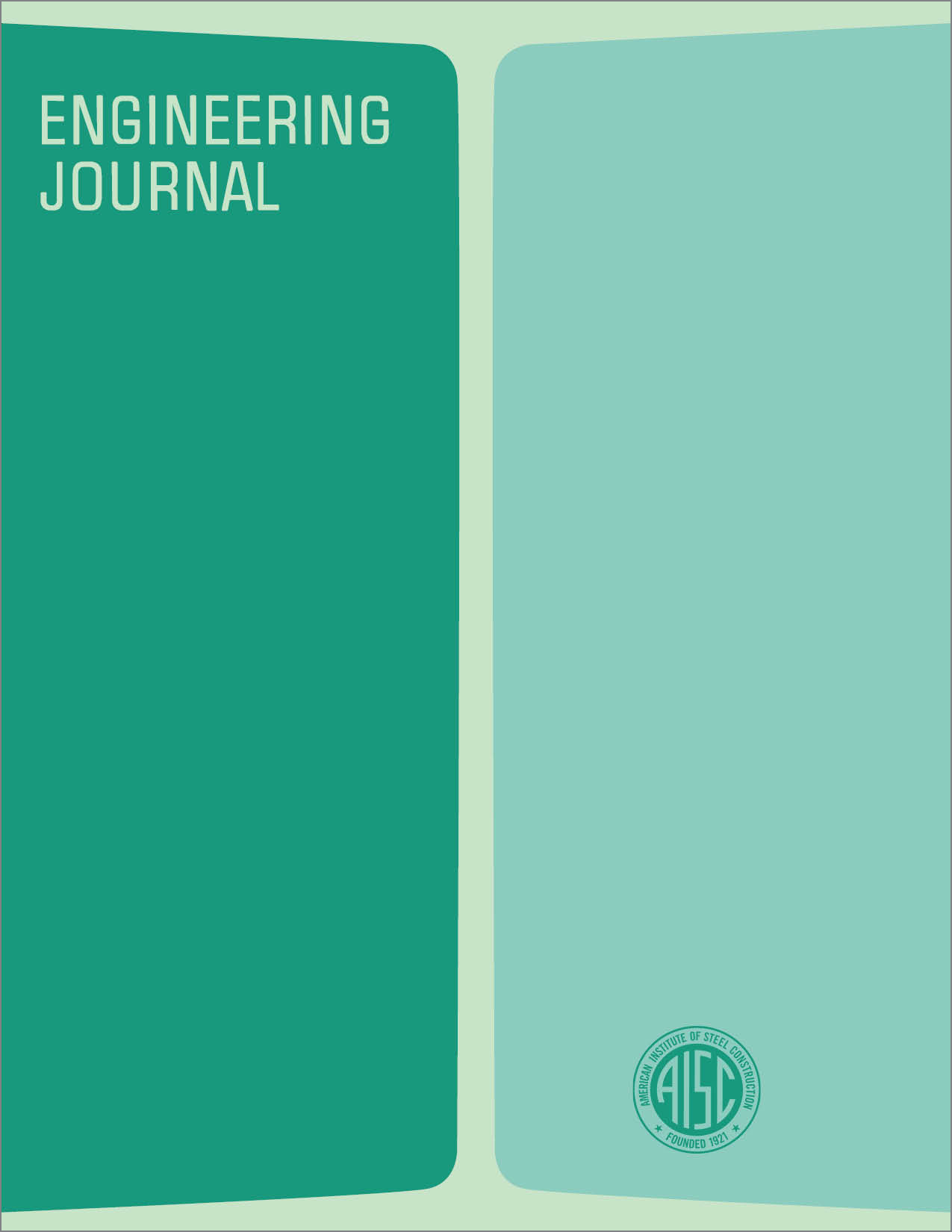Moment Resisting Connections for Mixed Construction
DOI:
https://doi.org/10.62913/engj.v17i1.348Abstract
Structural steel and reinforced concrete are often combined in modern structures. While such mixed construction offers a number of advantages, it also requires reliable connections between two very different materials. Headed metal studs are one method for connecting structural steel and concrete. Studs have been used for many years to provide shear connections between steel beams and concrete floor slabs. More recently, in response to mixed and precast concrete construction needs, their range of application has been expanded to include connections such as those shown in Fig. 1. In such moment-resisting connections there is a combined axial force and shear loading on each stud. However, since the studs act as a group, the best distribution of the applied Forces between individual studs for design purposes is not obvious. Information is needed on the factors affecting the strength and behavior of such connections and how best to design them. This paper describes the results of a series of 22 tests performed at the University of Washington on specimens of the type shown in Fig. 1. These specimens provide basic information relevant to two connection types found in practice. For mixed construction, the steel wide-flange section can be said to represent the end of a main member of a steel frame for which a moment resistant connection is required to a concrete column or wall. Alternatively, for either mixed o r precast concrete construction,6 the steel wideflange simulates part of a corbel connection used to support another member. The tests covered a variety of moment, shear, and stud embedment conditions, and a widely varying range of connection behavior was obtained. The results of these tests are compared with the results of previous Studies and existing design recommendations. Conclusions as to the effectiveness of these connections are presented and a recommended design procedure described.

